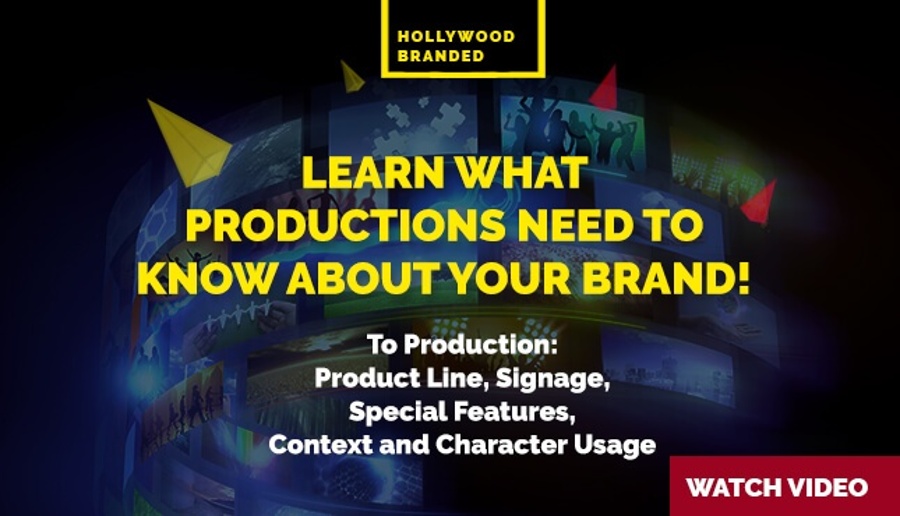David Lynch: How Product Placement Highlights His Unique Craft
Table Of Contents
BREAKING CONVENTIONS
David Lynch was a filmmaker known for breaking conventions and creating unforgettable cinematic experiences. Did you know that before becoming an acclaimed director, Lynch worked as an Eagle Scout and even helped usher in President Kennedy’s inauguration?
His unusual path to filmmaking shaped the quirky, offbeat storytelling style that defines his movies today. In this article, Hollywood Branded discusses how David Lynch uses product placement to emphasize the unique, surreal tone of his storytelling and why marketers can learn from his unconventional approach.
.png?width=500&height=281&name=top%20maroon%20rectangle%20w%20white%20link%20(7).png)
PRODUCT PLACEMENT AS A NARRATIVE TOOL
In most films, product placement feels like a commercial necessity, cars, beverages, or electronics prominently displayed to meet sponsorship deals. But for Lynch, these objects become something more. Take, for example, the infamous Heineken beer scene in Blue Velvet (1986). When the protagonist Jeffrey Beaumont awkwardly asserts, “Heineken? That’s my beer,” it’s more than just brand visibility. The line reflects Jeffrey’s naïve desire to fit into the adult world while simultaneously mocking the corporate ubiquity of consumerism.
Even more bizarre is Lynch’s use of brands in Twin Peaks, where Double R Diner’s cherry pie and coffee became iconic symbols. While these are not traditional placements in the sense of sponsorship, Lynch ensured they had a pervasive presence, not as ads, but as pillars of the show’s quirky charm. When FBI agent Dale Cooper praises the “damn fine cup of coffee,” he elevates an everyday object into something ritualistic, meaningful, and oddly soothing.
Fun Fact: Lynch once stated in an interview that he carefully considered brand appearances not for financial reasons, but for how they would resonate with the scene’s emotional tone.
 Photo Credit: Di Laurentiis Entertainment Group
Photo Credit: Di Laurentiis Entertainment Group
Blurring the line between reality and fiction
Lynch’s approach to product placement often blurs the line between reality and his twisted fictional worlds. Lynch admitted that he sometimes emphasizes products intentionally to give them a sense of unease, like using recognizable brands to remind viewers that even familiar objects can be unsettling in the wrong context. Instead of seamlessly integrating products, he emphasizes them to the point where they feel out of place, intentionally creating discomfort. In Lost Highway (1997), a Nokia phone is prominently featured during a tense scene, but instead of feeling like a natural addition, it becomes a totem of the bizarre, contributing to the film’s sense of detachment.
Similarly, Mulholland Drive (2001) presents product placement in an unsettling context. Winkie’s Diner, a fictional establishment inspired by a real Los Angeles eatery, becomes the site of one of the film’s most terrifying scenes. Here, a casual breakfast setting turns sinister, highlighting Lynch’s ability to transform mundane locations or objects, even coffee cups, into conduits of dread.
Marketers can learn from Lynch’s subversion of product placement by recognizing the importance of context. A well-placed product is not about visibility alone but about the emotional and narrative impact it creates.
 Photo Credit: Universal Pictures
Photo Credit: Universal Pictures
the absurdity of consumerism as commentary
David Lynch has always had a complicated relationship with consumerism, and this tension is evident in how he handles product placement. As Lynch once said, "There’s nothing wrong with a product appearing in a scene, as long as it serves the story and doesn’t feel forced. If it makes sense, it adds realism; if it doesn’t, it’s just noise." In Blue Velvet, Lynch contrasts the idyllic suburban façade, complete with manicured lawns and white picket fences, with the seedy underbelly of violence and corruption lurking just beneath the surface. Products like Heineken or the classic American diner staples serve as symbols of this duality.
A similar commentary on consumerism can be found in Twin Peaks: The Return (2017), where Lynch deliberately highlights fast food chains and cheap coffee brands, juxtaposing them with scenes of existential dread. Characters often engage with products in mechanical or exaggerated ways, subtly suggesting that modern consumer culture is both comforting and dehumanizing.
Lynch’s absurd take on product placement provides a lesson for brands: authenticity matters. A product forced into a scene purely for advertising can feel hollow, but when it’s woven into the story’s fabric, even satirically, it leaves a lasting impression.
Collaboration with iconic brands
Despite his critical approach to consumerism, Lynch collaborated with major brands in creative ways. Fans on Reddit often discuss how surreal and visually striking his Dior collaboration, Lady Blue Shanghai, was, some even calling it "a short Lynchian masterpiece in itself." The other notable example is his partnership with Gucci for the short film The Third Wave. These collaborations demonstrate Lynch’s ability to work within the confines of brand partnerships while maintaining his artistic integrity.
In these projects, Lynch didn’t simply create traditional commercials, he crafted surreal narratives infused with mystery, dreamlike visuals, and psychological tension. By giving brands a role within his storytelling rather than outside of it, he redefined what branded content could achieve.
For marketers, this collaboration reveals a powerful insight: creative freedom and brand visibility don’t have to be mutually exclusive. Allowing artists to maintain their unique voice can result in campaigns that resonate deeply with audiences.
What can we learn from Lynch's Product placement
- Context is King: Products should enhance the story, not distract from it. Lynch places brands in settings that evoke emotional responses, making them integral to the scene.
- Subversion Can Be Memorable: Don’t be afraid to subvert expectations. Lynch’s ironic or unsettling use of brands makes them more memorable and meaningful.
- Collaborative Creativity: When working with creative partners, give them the freedom to integrate your product authentically into their vision.
- Symbolism Over Visibility: A product’s symbolic role can leave a stronger impression than constant screen time.
- Less Is More: Strategic, subtle placement can be more effective than overexposure.
David Lynch’s films are proof that product placement doesn’t have to follow a formula. Whether he’s turning a Heineken beer into a symbol of youthful naivete or making a coffee cup synonymous with mystery, Lynch shows how products can be woven into stories in unexpected, meaningful ways. For marketers, Lynch’s approach offers a compelling reminder: when products are thoughtfully integrated into a narrative, they transcend advertising and become part of the storytelling magic.
As the lines between entertainment and marketing continue to blur, brands that embrace creativity and context will stand out, just like Lynch’s unforgettable works.
Eager To Learn More?
If you found Lynch’s creative use of brands fascinating, dive deeper into the world of product placement by exploring related articles from our blog. Uncover strategies, case studies, and tips that can help marketers understand the evolving role of brands in media.
- Unlocking the Power of Product Placement: Strategies for Success, DIY or Agency
- 10 Surprising Reasons Why Brands Do Product Placement
- The Hidden Value of Product Placement
- Measuring the Effectiveness of Product Placement: Key Metrics and Insights
- From Silver Screen to Social Feeds: How Product Placement Evolves
Want to stay in the know with all things pop culture? Look no further than our Hot in Hollywood newsletter! Each week, we compile a list of the most talked-about moments in the entertainment industry, all for you to enjoy!







